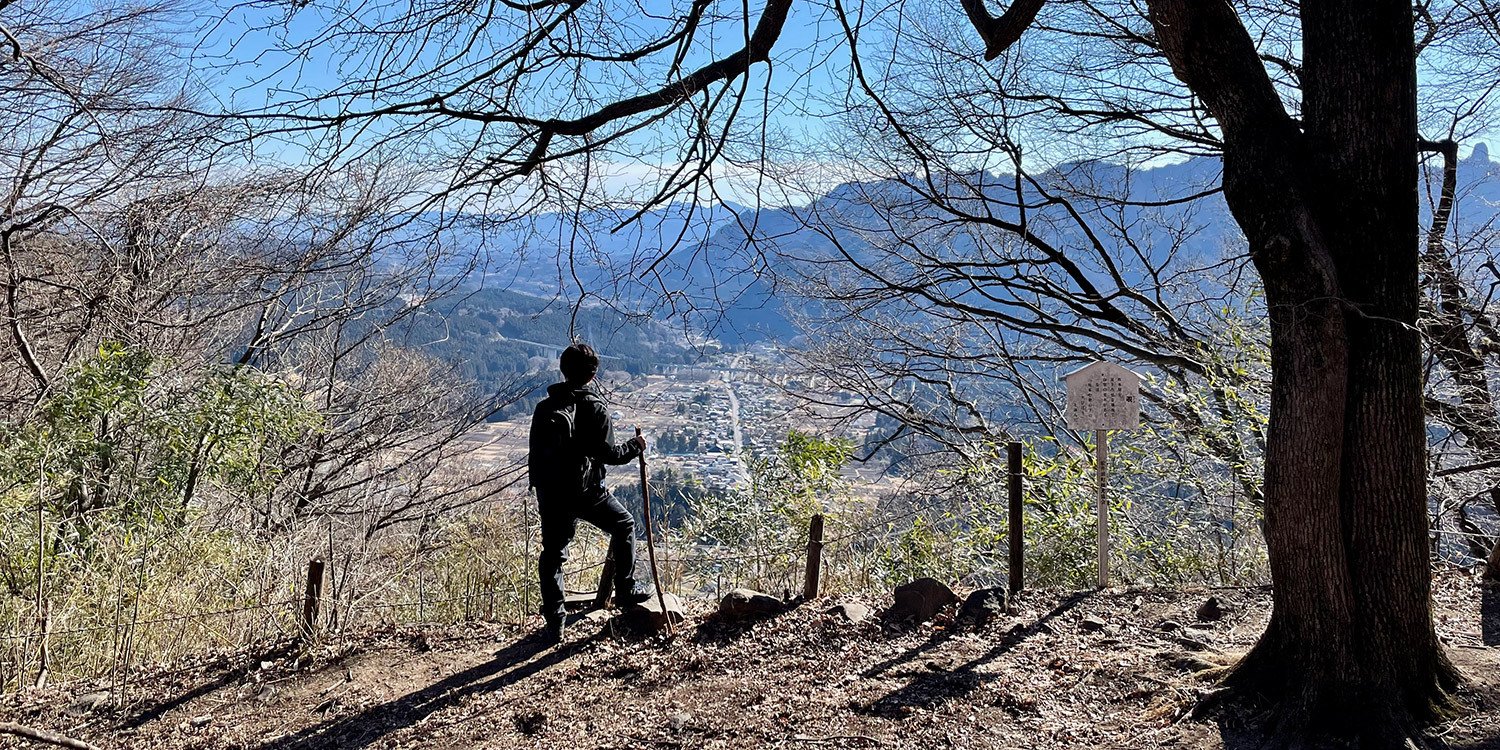Explore Karuizawa's History on the Karuizawa Cycle Train Cycling Tour
Explore Karuizawa and beyond on a cycling tour along the historical trade routes of the Nakasendo and Hokkoku Kaido.
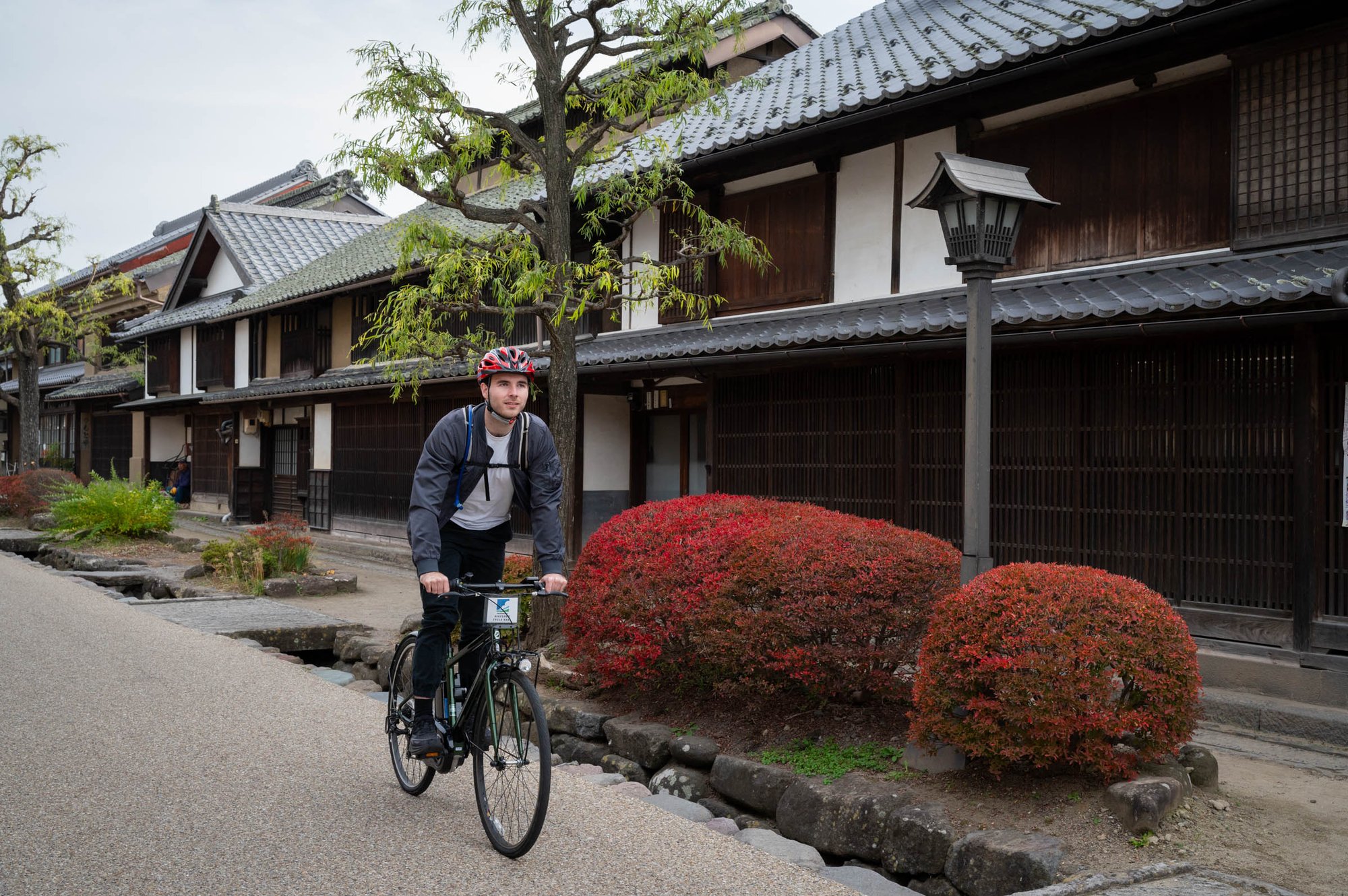
The summer resort town of Karuizawa was once the confluence of several ancient roads, namely the Nakasendo trail and the Hokkoku Kaido gold trail. While the Nakasendo connected the former capital of Kyoto to the new capital of Edo, the Hokkoku Kaido diverged from the Nakasendo and headed north past Zenkoji Temple towards Niigata and Sado Island, home of Japan's largest gold mine.
Karuizawa prospered due to the many travelers and merchandise that flowed along these roads, and remnants of that era remain to this day. On a cycling tour around Karuizawa and its neighboring towns, you can learn more about the area’s history and the trails that passed through it.
Explore Karuizawa's History on the Karuizawa Cycle Train Cycling Tour
- Ride an E-Bike along the Ancient Nakasendo and Hokkoku Kaido
- Visit Kyu-Karuizawa Ginza (and Karuizawa-juku)
- Reach the Crossroads of two Historical Trails at Oiwake-juku
- Descend into the Castle Town of Komoro
- Enjoy a Soba Noodle Lunch at Choujian
- Step Back in Time at Unno-juku—the Hokkoku Kaido’s most Well-Preserved Post-town
- Ride the Karuizawa Cycle Train back to Karuizawa
Ride an E-Bike along the Ancient Nakasendo and Hokkoku Kaido
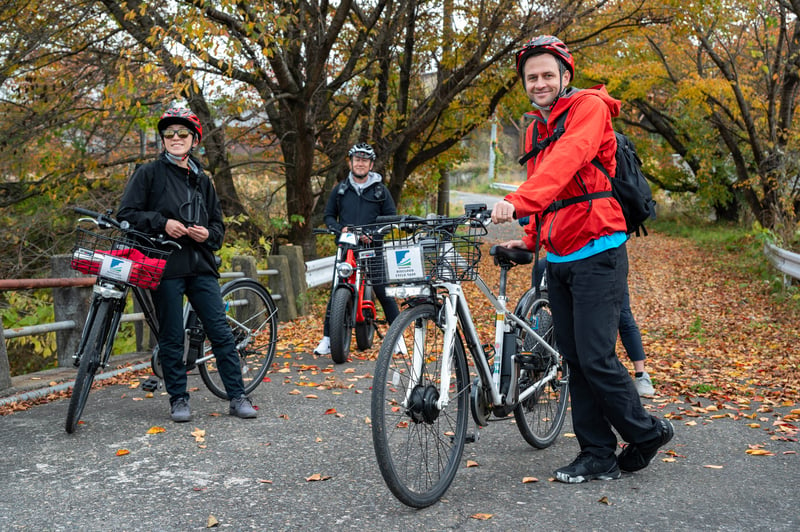
Back in the day, travelers would walk on foot for up to 40 kilometers a day as they traveled along the Nakasendo. But e-bikes make the journey much easier. You can speed through flat sections and climb hills without breaking a sweat. Set the level of assistance to your personal preference and let the bike take care of the hard work for you.
Start from Karuizawa Station and cycle through central Karuizawa before heading onto the old Nakasendo trail. Stop along its post-towns of Oiwake-juku, Komoro-juku and Unno-juku. This one-way journey is 35 kilometers in length and mostly downhill. Finally, take the Karuizawa Cycle Train from Tanaka Station back to Karuizawa Station.
Visit Kyu-Karuizawa Ginza (and Karuizawa-juku)
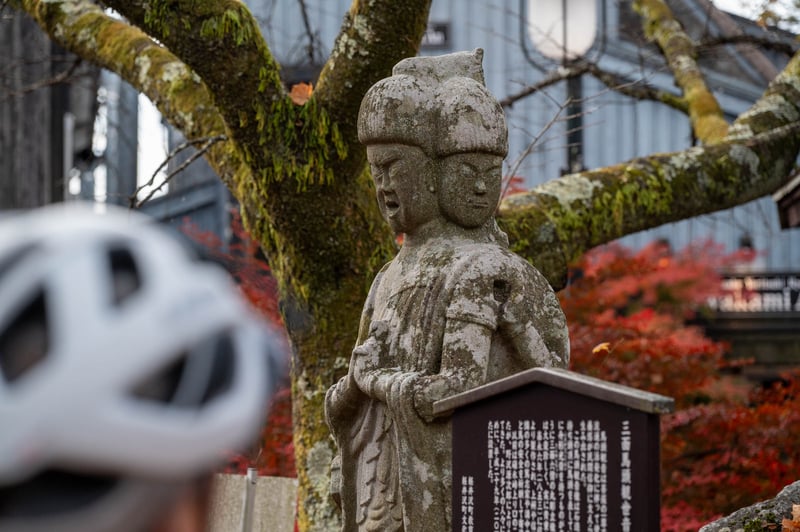
The tour travels from Karuizawa Station towards Kyu-Karuizawa Ginza, the town’s former main street. It is lined with old-fashioned bakeries, cafes and local shops, and if you look carefully, you can find remnants of its old post-town, Karuizawa-juku, as well.
At the entrance to the pedestrian-only zone is a small traffic island. Surrounded by a grove of trees is the three-headed batō kannon, a statue of the protective deity of horses. Along the ancient Nakasendo and Hokkoku Kaido, horses were an important means of transportation and batō kannon statues were erected to pray for their safety. This kannon statue features three heads—quite a rare specimen that speaks to the area’s prosperity.
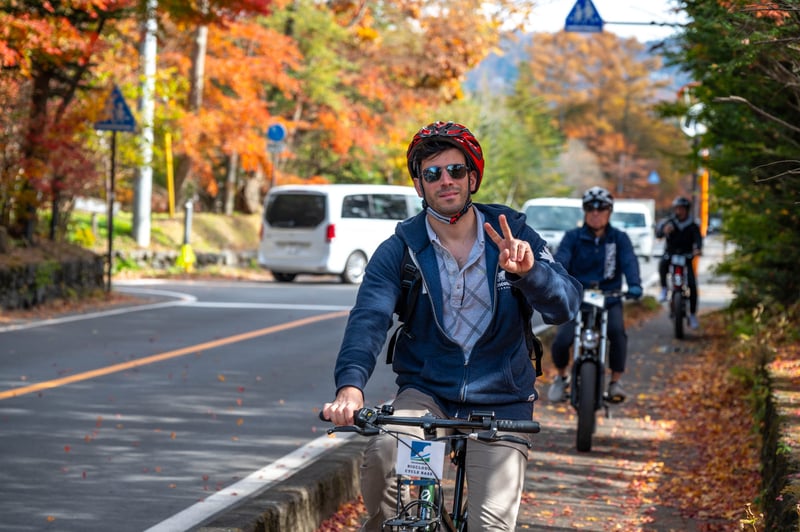
After peering into the bustling street of Kyu-Karuizawa, we continue along the Nakasendo trail heading towards the next post-town on the way to Kyoto, Oiwake-juku. The shops and restaurants of town soon fade away and are replaced by the lush canopies of Karuizawa’s forests.
Reach the Crossroads of two Historical Trails at Oiwake-juku
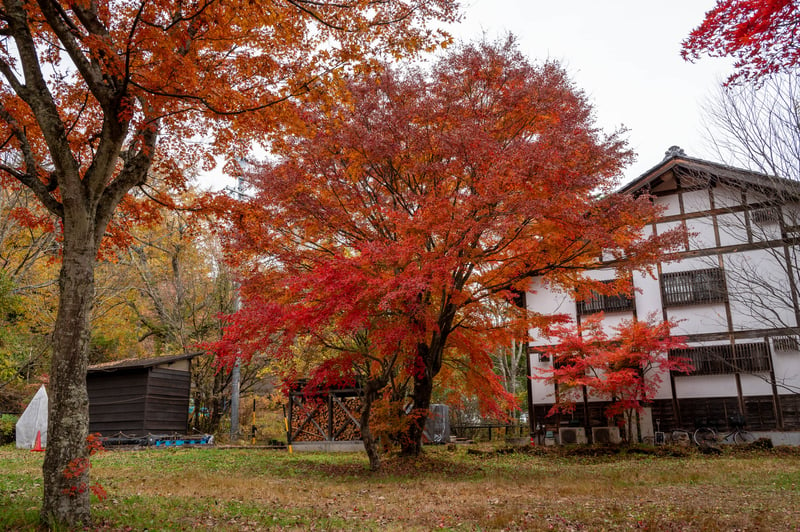
Cycling for about 30 minutes along the main road, we eventually arrive at Oiwake-juku, the 20th of the 69 post-towns of the Nakasendo. The term “oiwake” means junction, as this post-town was the diverging point of the Nakasendo and Hokkoku Kaido trails. The former crossed the central highlands to the west while the latter continued north, eventually passing Zenkoji Temple as it headed towards Niigata. The town of Oiwake prospered at the convergence of these two trails.
Many inns once lined the street here. Among them, the Wakihonjin inn served high-ranking guests. Oiwake’s Aburaya Wakihonjin inn has been restored and is used as a multipurpose space, including a gallery and an accommodation. We stop here to see the building and learn about its history from the current custodian. It’s also time for a snack.
Descend into the Castle Town of Komoro
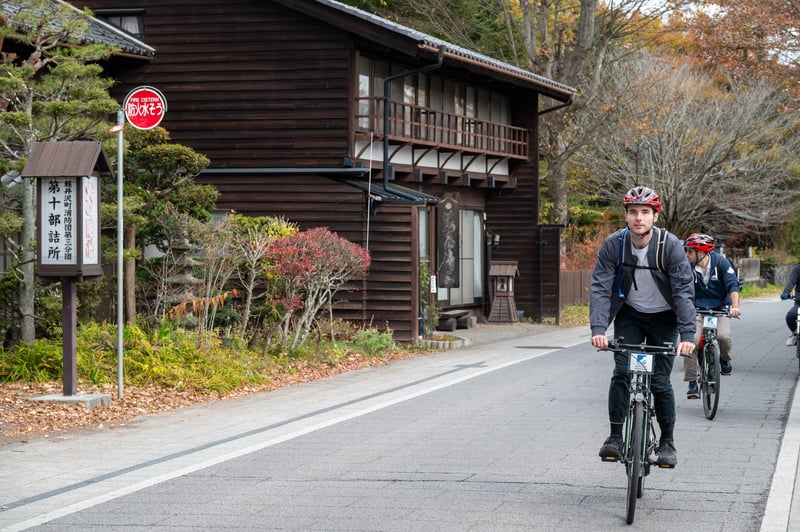
From Oiwake-juku, we diverge from the Nakasendo, taking the Hokkoku Kaido heading northwest. The road crests the hill and descends sharply downward. The feeling of the wind on your face as you speed down the hill is invigorating!
The slope flattens out and the route turns on to quieter roads dotted with small stone statues and remnants of the Hokkoku Kaido. The countryside residential area eventually gives way to the townscape of Komoro, one of the trail’s post-towns and also a castle town. A patchwork of buildings from various eras of Japan’s history line the streets, from retro Showa period shops to the post-town inns that date back to the Edo period.
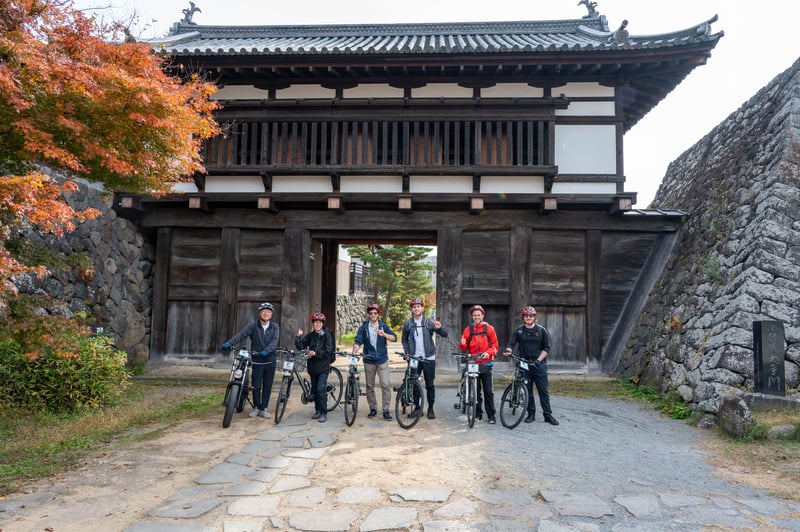
Just on the other side of the station is Komoro’s castle ruins. Unlike most other castles in Japan, Komoro Castle sat below the rest of town. Only its stone walls remain, but they are adorned by canopies of cherry blossoms in spring and vibrant red and orange foliage in autumn.
Enjoy a Soba Noodle Lunch at Choujian
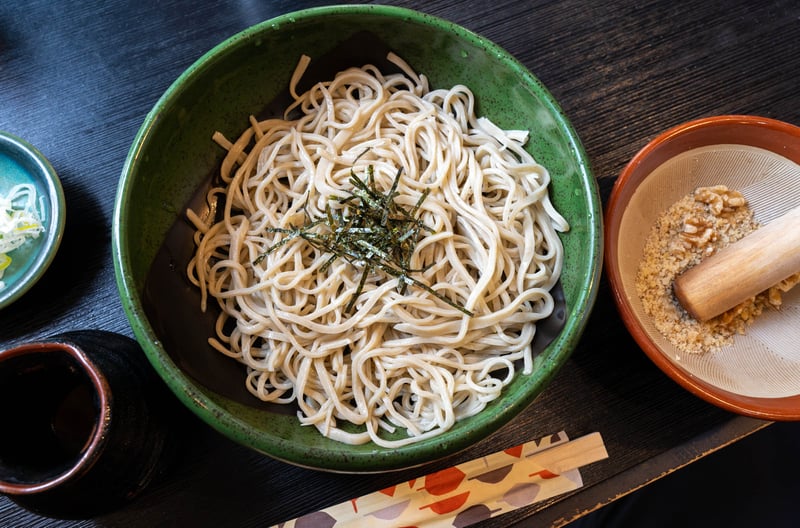
Nagano Prefecture is known for its buckwheat soba noodles, and Choujian has been serving soba noodles in Komoro for over 200 years. The soba noodles are paired with tsuyu broth and walnuts, a specialty of neighboring Tomi City. Grind up the walnuts into paste and mix with tsuyu to create the perfect dipping sauce.
Step Back in Time at Unno-juku—the Hokkoku Kaido’s most Well-Preserved Post-town
The route departs Komoro and passes through the countryside of Eastern Nagano. To our left, terraced rice fields descend into the valley below. Their appearance changes with the passing of the seasons: in spring, the paddies may be flooded with water and in autumn, stalks of rice may be hung up to dry.
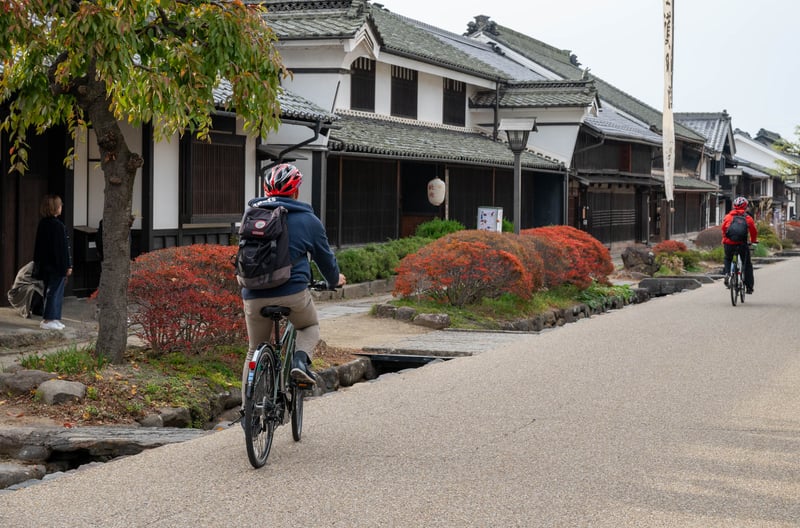
The final stop on the tour is Unno-juku, the most well-preserved post-town of the Hokkoku Kaido. In its heyday, there were 23 inns in town and over 50 post houses here. The buildings remain, exhibiting the traditional architecture of the Edo Period such as lattice window blinds and Udatsu, walls between buildings that prevented the spread of fire. A small canal and a line of trees divide the street into a main thoroughfare and a smaller walking path.
We have about 30 minutes to take in the scenery of this Edo period town and stop for a quick snack. On a hot day, nothing beats a hand-made popsicle from Mugi, a charming café on the far end of the street.
Ride the Karuizawa Cycle Train back to Karuizawa
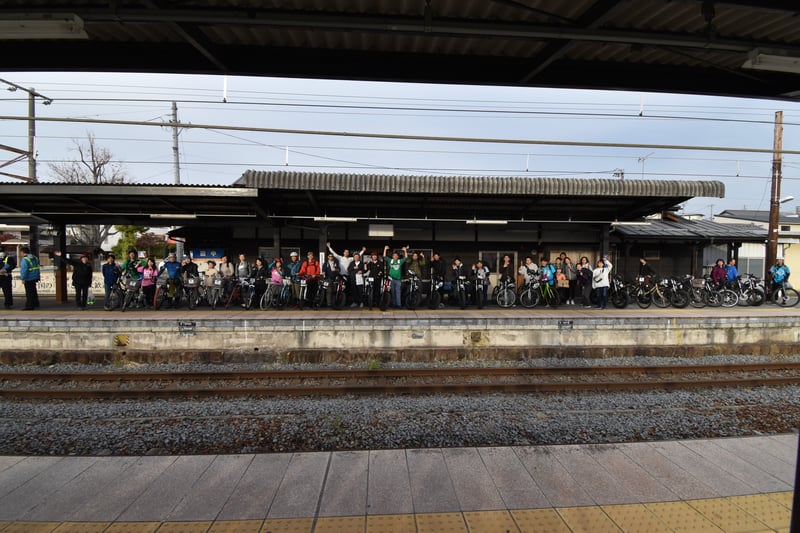
The route then leads back to Tanaka Station. From here, participants load their bikes on to the Karuizawa Cycle Train and head back to Karuizawa Station. While taking in the view of eastern Nagano’s countryside and towering Mt. Asama from the train car, you can enjoy a freshly baked oyaki dumpling, another of Nagano’s specialties.
The tour ends after arriving back at Karuizawa Station. Return your bikes to the plaza where it all began and head off on your next adventure. You can spend more time taking in Karuizawa’s natural scenery, shop at the Karuizawa Prince Shopping Plaza, or head on to new destinations utilizing the Hokuriku Shinkansen train.
Conclusion
Visitors flock to Karuizawa to take in the fresh air and natural scenery while enjoying the town’s plentiful restaurants, cafes and shops. But beyond the main thoroughfares of Karuizawa is a wealth of history that goes back hundreds of years. With a knowledgeable guide and an e-bike, you can follow along these ancient trails and travel to post-towns that once bustled with merchants, nobles and samurai.
To learn more about the Karuizawa Cycle Train, see their official English website.

![Karuizawa [Guide]](https://www.go-nagano.net/hubfs/Imported_Blog_Media/18082_ext_01_en_0_L.jpg)
